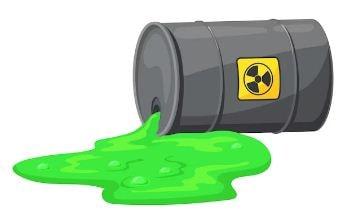What is spillage?
Spillage is the out-of-control liquid flow on the floor, earth, or any other surface.
Secondary containment
Secondary containment is pre-spillage control containment.
There have been so many incidents where we faced the blast of the chemical tank or oil tank. Chemicals and oil affect vast areas and many people. Controlling this type of spillage is very difficult. Chemicals and oil are a huge quantity of waste. Controlling the waste of liquid from spills and tank blasts builds a boundary wall around the tank. The inside of the boundary wall and floor should be furnished with a special material or ceramic tile. Chemicals are bound in the boundary wall in case of tank blasts or spills. This type of boundary wall around the tank to save the chemicals in case of spillage is called secondary containment.
Dimensions of secondary containment
The secondary containment capacity should be 110% of the storage tank capacity. We can find out the volume of the storage tank as 2R*H as 2*22/7*R*H. This formula helps us to find the volume of secondary containment. And it must be 110% of the storage tank.
How to control spillage safely.
1. In spillage, first inform your concerned officer or EHS department. Make sure that everyone is safe.
2. Identify the chemicals and their behavior involved in the spillage by reading the SDS sheet.
Firstly prioritize areas where the chemical may meet other chemicals and electrical sources.
3. If a chemical affects your eyes or body immediately Strip your clothes. Wash your eyes and body for 20 minutes under an eye wash and safety shower. Also, inform the company medical officer or visit the nearest medical center.
4. This material should be available for all chemical and oil storage locations.
| TYPE OF SPILLED LIQUID | ABSORBANT MATERIAL |
| Acid | Sodium Bicarbonate |
| Base | Citric Acid |
| Oil | Absorbent pads |
| Other | Sand |

Note:-
Change the absorbent material and PPEs according to the chemical and liquid spill hazard.
5. A floor warden or employee who works on spillage of chemicals or oil. You should wear rubber shoes, natural gloves, and chemical goggles. Further spilled chemicals leave vapor then wear a full face mask and chemical suit. To clean up the spill properly, take all steps.
6. Spread spelling response material at spilled chemical or oil. After this pack chemicals or oil in a PVC bag with the help of brome and spine.
7. At the time of oil spillage use absorbent pads for cleaning. Put these absorbents in a PVC bag and seal it.
8. Wash the floor with water where it is spilled. It would be best to evacuate the spillage area until properly cleaned up.
9. Clean all tools and personal safety equipment used in the spillage control process.
Spillage report
Spill response station.
Where a chemical store or use point and spill hazards are present spill response stations and spill responders are very necessary. A box or cabin and or racks for PPE use during spillage control should be available at the chemical store or chemical-using area or in the chemical lab
Spill responders.
The list of team members should be pate there. Include employee code, name, designation, shift, and contact number. That’s why those who handle spillage during their duty should be available there. Spell responders should be trained for spillage control and chemical hazards.
